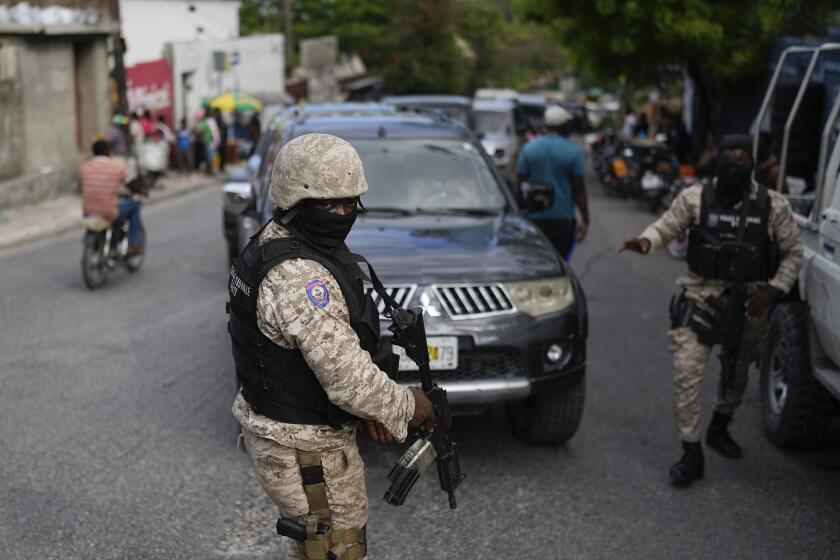As cap slows leak, officials battle ‘hundreds or thousands of patches of oil’
The cap that was installed last week on the leaking oil well in the Gulf of Mexico is recovering 15,000 barrels of oil per day, with that rate expected to increase to 20,000 barrels in the near future, Coast Guard Adm. Thad Allen told reporters at a Monday-morning briefing.
Meanwhile, officials are seeking additional skimmers — the equipment used to soak up oil floating on the surface of the water — to assist in the cleanup of what Allen said was “no longer a single spill, but a massive collection of smaller spills.”
“We’re adapting to an enemy that changes,” Allen said, noting that there are now “hundreds or thousands of patches of oil” throughout the gulf.
Allen cautioned that, despite cleanup and containment efforts, “disaggregation of this spill is going to cause oil to come onshore.”
FOR THE RECORD:
An earlier version of this story and its headline quoted Coast Guard Adm. Thad Allen as saying there are “hundreds of thousands of patches of oil” throughout the gulf. He said “hundreds or thousands.”
Although the newly installed cap on the well has slowed the oil leak, it will continue until relief wells have been drilled — a process that is expected to last into the summer.
“The long-term solution to this is going to be drilling of the relief wells,” Allen said.
“We’ll be dealing with oil and the effects of oil,” he added, “at least four to six weeks after the well is capped.”
As drilling of the relief wells is underway — one well was nearly 8,000 feet below the seafloor, and another was 3,000 feet deep by Monday morning — a second production platform is being brought in to increase recovery capacity from the containment device that was lowered onto the well last week. A larger platform with the ability to handle 20,000 barrels of oil per day will arrive in several weeks.
Oil recovered from the surface is being recycled, Allen said.
Asked if BP should be selling the oil after it’s been recovered, White House Press Secretary Robert Gibbs said the the cost to BP is “likely to greatly exceed what the oil that is recouped is sold for on the market.”
Gibbs said he did not know whether BP will pay royalties on the recovered oil that is sold.
Allen said more than 1-million gallons of dispersants, the chemicals that break up oil, have been used since the spill began. Environmentalists and some officials — Allen noted particular “concern” from EPA Administrator Lisa Jackson worry that dispersants may cause serious harm to the environment.
Injecting of dispersants into the subsea will continue, but “we need to have a minimum amount of dispersant we’re using,” Allen said.
By Monday, the oil had stretched to impact about 120 miles of the Gulf, but could cover an even greater distance, Allen said, as it reaches deep into the marshlands along the coast.
Crews have laid boom – the equipment that absorbs and contains oil – throughout the region, but Allen cautioned that “boom is not a silver bullet against oil”
Asked to respond to concerns that the cleanup and containment effort has appeared slow and lacking in resources, Allen said officials were doing their best to respond to a “peculiar set of circumstances that were not anticipated.”
In the past, the Coast Guard has run drills to prepare for a spill in the gulf, including one in which Allen was the lead commander. But Allen said that drill focused on a potential spill closer to shore and of a much smaller magnitude.
“I don’t think any plan envisioned it would get out that far and disaggregate,” Allen said. “If anything is taxing our resources, it’s the breadth.”
Allen said a team has been assembled to consider newer technologies that could improve cleanup capacity.
More to Read
Start your day right
Sign up for Essential California for news, features and recommendations from the L.A. Times and beyond in your inbox six days a week.
You may occasionally receive promotional content from the Los Angeles Times.






